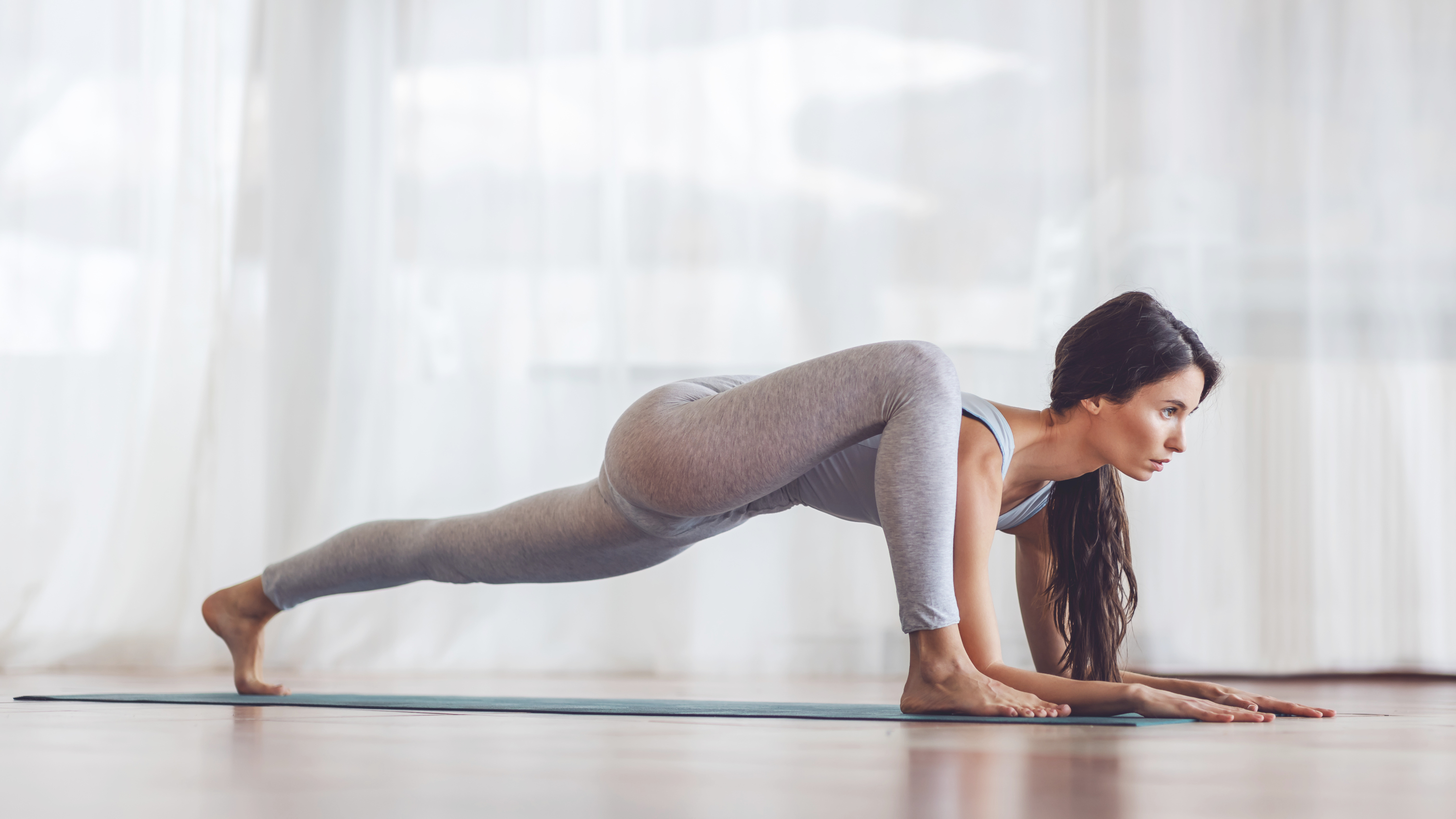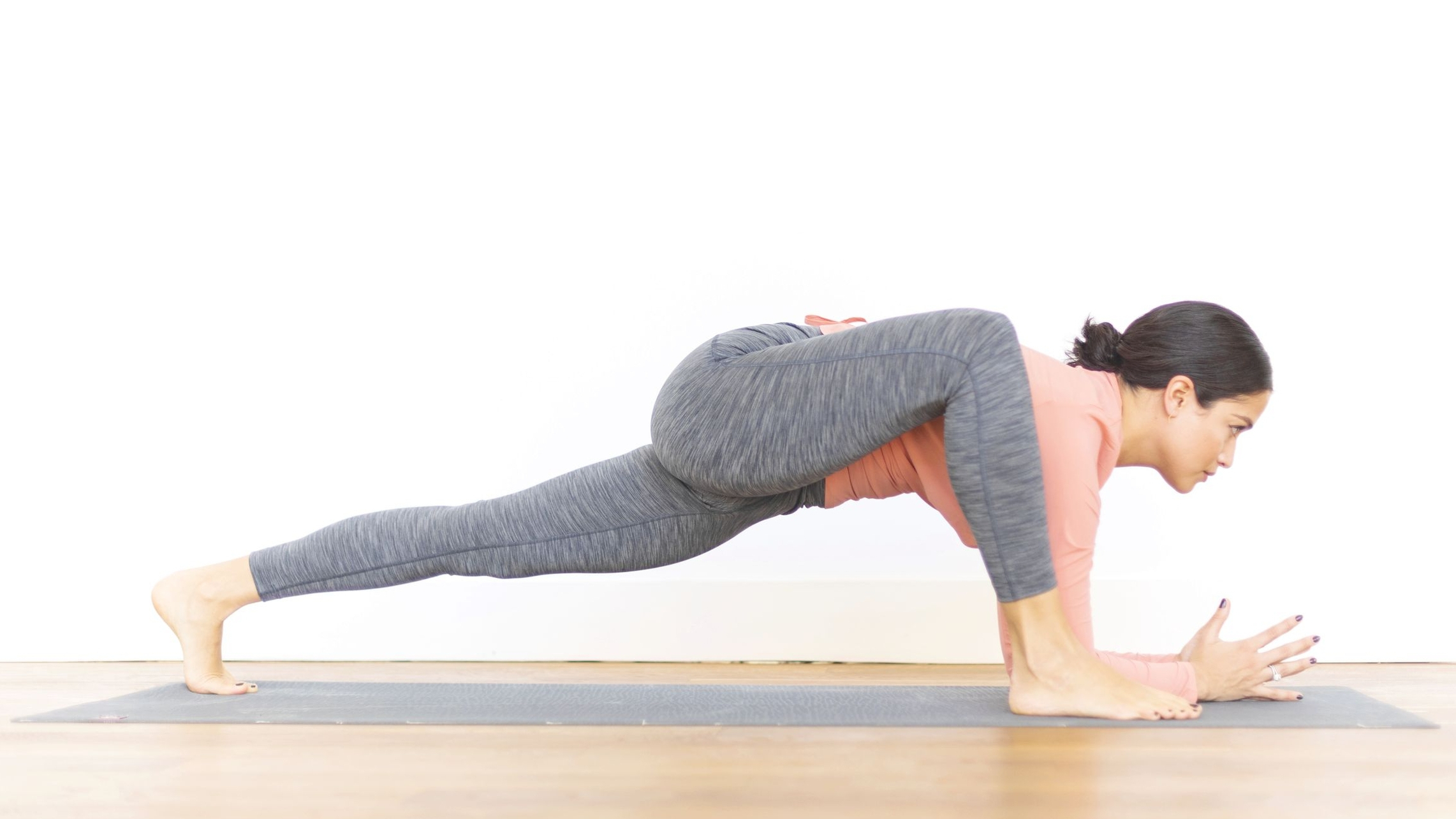
The lizard pose is a wonderful stretch of the hip flexors, hamstrings and quadriceps. If you want to increase your mobility and flexibility while easing tension in your body then you’ll probably want to add this popular yoga pose to your routine. It will fit nicely into a stretching routine or can be used as a standalone exercise.
The lizard pose is a yoga pose known as 'Utthan Pristhasana' in Sanskrit. It is a deep hip opener and a stretch for the groin and hamstrings. To perform the Lizard Pose, start in a plank position, step one foot forward towards the outer edge of the hand, lower the opposite knee to the mat, and either stay on your hands or lower onto your forearms, allowing for a deep stretch in the hips and groin.
Although I had practised this move before as it forms the basis of various yoga flow sequences, I wanted to see what would happen when I performed the exercise on its own every day for three minutes.
Keep reading to find out how I felt during and after this challenge and why I love this exercise
How to do the lizard pose

- Begin in a plank position, and then step your right foot forward towards the outer edge of your right hand.
- Align your left knee with the center of your body.
- Slide your right foot to the outer edge of the mat, creating a wide stance.
- Lower your forearms to the mat, either staying on your hands or going down onto your forearms for a deeper stretch.
- Keep your chest lifted, shoulders away from your ears, and maintain a neutral spine.
- Breathe deeply and hold the pose for an adequate duration.
- Repeat the same steps on the other side by stepping your left foot forward.
I did a 3 minute lizard pose every day for a week — here's why I love it
I never expect any mammoth changes when I try out an exercise for the week. However, spending a week with an exercise allows me to familiarise myself with it, work out where it targets and where I feel the most benefits as well any other observations. The lizard pose is one I can see having some great long term benefits. Here's why...
I didn’t realise how tight my lower body muscles were
I used to be much more consistent with attending yoga classes or following along with Yoga with Adriene on YouTube, but I've fallen off the bandwagon in the last year, and it shows. On the first day of completing this stretch, my quads and hamstrings in the leading leg of the pose felt really tight. It felt sore but the good kind, the kind you know your muscles need. It felt satisfying to reach the end of the three minutes and then push the other side of my body into position.
Having tight hamstrings and quads can contribute to imbalances in the body and potentially lead to issues such as lower back pain or muscle strains. Doing the lizard pose daily for a week allowed me to identify my own tightness early on. I am now spending time stretching my quads and hamstrings to help reduce the risk of injuries.
It helped me tune into my breathing
It’s so easy to forget the importance of breathing and how our breathing can affect how we perform and feel during an exercise. I've been in yoga classes where the instructor guides the class to take a deep inhale followed by an exhale to assist in the movement, and despite my best efforts, it still feels off or unnatural.
Just tuning into the lizard pose alone and feeling a deep stretch in my lower body muscles helped simplify things for me. I simply breathed in and out deeply and slowly and quickly felt the benefit of breathwork during stretching. It was certainly a lot less demanding than when I switched to nasal breathing only while running a 5K.
It felt great for my hips
The stretch targets the hip flexors and the psoas muscle, which can be felt in the front of the hip of the leg that is extended back. The hip flexors engage during various activities, including walking, standing, running, cycling, and sitting. As a keen runner, I am always trying to increase the mobility of my hips, especially when research suggests that runners generally have tighter hamstring muscles, particularly in hip flexion, compared to non-runners. I could feel myself being able to get into a deeper stretch as the week progressed. So, this stretch is definitely one I’m going to keep up with this year.
I did a 3 minute lizard pose every day for a week — here's why I love it
I enjoyed doing the lizard pose every day and felt like it was genuinely useful for relieving tension and loosening up areas I’d rather not feel so tight in like my hips, quads and hamstrings. Anyone can pick this stretch up, whether you’re an avid runner, keen CrossFitter or serial hiker, stepping into the lizard pose is great for improving mobility and stretching important muscles like the hip flexors.
If you need to modify the exercise to make it a little easier, there are a couple of routes you can go down. You can bring some yoga blocks into the move, so instead of bringing your hands to the floor, use yoga blocks or place your hands on a higher surface (like a stack of books) to reduce the distance to the ground. This eases the stretch in the hips. Or, you can lower the back knee to the mat. This provides additional support and decreases the intensity of the stretch.
It’s a good idea to ask a yoga instructor for help when you try any stretch for the first time. This means you can make sure it’s suitable for you to practice and you can get extra support while you master the correct form.







